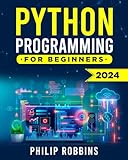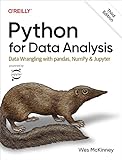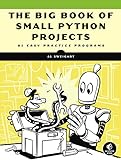To combine values in a DataFrame in pandas, you can use various methods such as concatenation, merging, and joining.
Concatenation involves combining multiple DataFrames along rows or columns. This can be done using the concat function in pandas.
Merging involves combining DataFrames based on a common column or index. This can be done using the merge function in pandas.
Joining involves combining DataFrames based on their index. This can be done using the join function in pandas.
By using these methods, you can effectively combine values in a DataFrame in pandas based on your specific requirements.
What is the use of the suffixes parameter in the merge function?
The suffixes parameter in the merge function is used to specify a suffix to append to overlapping column names in the two DataFrames being merged. This is useful when there are columns with the same name in both DataFrames and you want to differentiate them in the final merged DataFrame.
For example, if you have two DataFrames with a column called "ID" and you merge them together with the suffixes parameter set to ('_left', '_right'), the resulting DataFrame will have columns "ID_left" and "ID_right" to denote where each column came from.
It allows you to handle the case when two DataFrames have a common column name by providing a way to distinguish them in the resulting merged DataFrame.
How to merge two dataframes in pandas based on a specific column?
You can merge two dataframes in pandas based on a specific column using the merge() function. Here's an example of how you can do this:
1 2 3 4 5 6 7 8 9 10 11 12 |
import pandas as pd # Create two sample dataframes df1 = pd.DataFrame({'A': [1, 2, 3, 4], 'B': [5, 6, 7, 8]}) df2 = pd.DataFrame({'A': [1, 2, 3, 4], 'C': [9, 10, 11, 12]}) # Merge the dataframes based on the 'A' column merged_df = pd.merge(df1, df2, on='A') print(merged_df) |
In this example, df1 and df2 are two dataframes that we want to merge based on the 'A' column. We use the merge() function and specify the on parameter as 'A' to merge the dataframes based on the 'A' column. The resulting merged_df dataframe will contain columns 'A', 'B', and 'C' where rows from df1 and df2 are merged based on the values in the 'A' column.
What is the purpose of the how parameter in the merge function?
The how parameter in the merge function specifies how the merge operation should be performed. It can take different values such as "inner", "outer", "left", or "right", which determine how the merging of two data frames should be done.
- "inner" merges only the rows that have matching keys in both data frames
- "outer" merges all rows from both data frames, filling in missing values with NaN for non-matching keys
- "left" merges all the rows from the left data frame, filling in missing values with NaN for non-matching keys from the right data frame
- "right" merges all the rows from the right data frame, filling in missing values with NaN for non-matching keys from the left data frame
By specifying the how parameter, you can control how the data frames are merged and what kind of result you want to achieve.
How to combine values in a dataframe pandas while dropping duplicate columns?
You can combine values in a DataFrame in pandas while dropping duplicate columns using the groupby function along with the sum() or mean() functions. Here's an example:
1 2 3 4 5 6 7 8 9 10 |
import pandas as pd # Create a sample DataFrame with duplicate columns data = {'A': [1, 2, 3], 'B': [4, 5, 6], 'C': [7, 8, 9], 'A': [10, 20, 30]} df = pd.DataFrame(data) # Combine values in DataFrame while dropping duplicate columns result = df.groupby(level=0, axis=1).sum() print(result) |
In this example, we created a DataFrame df with duplicate columns. We then used the groupby function along with the sum() function to combine values in the DataFrame while dropping the duplicate columns. You can also use other aggregation functions such as mean(), max(), min(), etc., depending on your requirements.
How to concatenate two dataframes in pandas?
You can concatenate two dataframes in pandas using the pd.concat() function.
1 2 3 4 5 6 7 8 9 10 |
import pandas as pd # Create two dataframes df1 = pd.DataFrame({'A': [1, 2, 3], 'B': [4, 5, 6]}) df2 = pd.DataFrame({'A': [7, 8, 9], 'B': [10, 11, 12]}) # Concatenate the two dataframes along the rows result = pd.concat([df1, df2]) print(result) |
This will concatenate the two dataframes df1 and df2 along the rows and output the concatenated dataframe.









